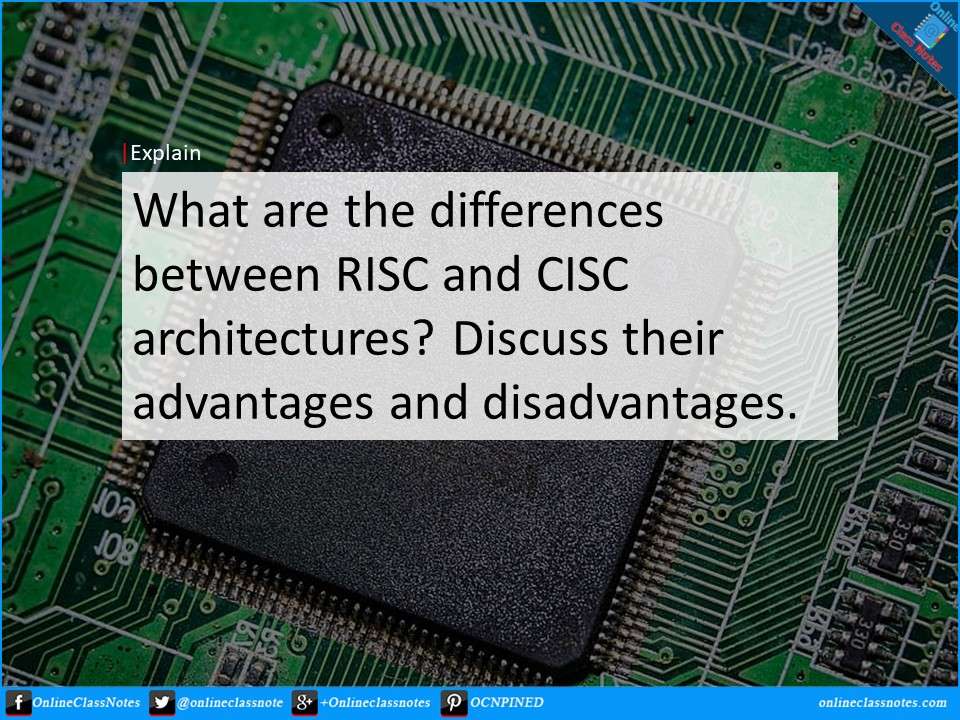CPU caches serve as high-speed storage units that store frequently accessed data and instructions to reduce the latency of memory access and improve overall CPU performance. Caches are designed to exploit the principle of locality, which states that programs tend to access a relatively small subset of data and instructions repeatedly within a short period of time. By storing this frequently accessed data and instructions in caches, CPUs can minimize the time spent waiting for data to be fetched from slower main memory.
Day: May 11, 2024
What are the differences between RISC (Reduced Instruction Set Computing) and CISC (Complex Instruction Set Computing) architectures? Discuss their advantages and disadvantages.
RISC (Reduced Instruction Set Computing) and CISC (Complex Instruction Set Computing) architectures are two distinct approaches to CPU design, each with its own characteristics, advantages, and disadvantages.

